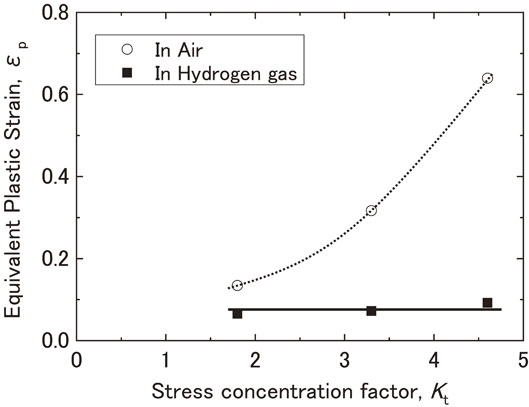Volume 62, Issue 8
Displaying 1-29 of 29 articles from this issue
- |<
- <
- 1
- >
- >|
Regular Article
Materials Physics
-
Article type: Regular Article
2021Volume 62Issue 8 Pages 1057-1063
Published: August 01, 2021
Released on J-STAGE: July 25, 2021
Advance online publication: June 18, 2021Download PDF (3619K) Full view HTML
Microstructure of Materials
-
Article type: Regular Article
2021Volume 62Issue 8 Pages 1064-1070
Published: August 01, 2021
Released on J-STAGE: July 25, 2021
Advance online publication: June 04, 2021Download PDF (5058K) Full view HTML -
Article type: Regular Article
2021Volume 62Issue 8 Pages 1071-1078
Published: August 01, 2021
Released on J-STAGE: July 25, 2021
Download PDF (6136K) Full view HTML -
Article type: Regular Article
2021Volume 62Issue 8 Pages 1079-1088
Published: August 01, 2021
Released on J-STAGE: July 25, 2021
Advance online publication: June 11, 2021Download PDF (4665K) Full view HTML -
Article type: Regular Article
2021Volume 62Issue 8 Pages 1089-1096
Published: August 01, 2021
Released on J-STAGE: July 25, 2021
Advance online publication: June 25, 2021Download PDF (5462K) Full view HTML
Mechanics of Materials
-
Article type: Regular Article
2021Volume 62Issue 8 Pages 1097-1101
Published: August 01, 2021
Released on J-STAGE: July 25, 2021
Advance online publication: June 25, 2021Download PDF (2931K) Full view HTML -
Article type: Regular Article
2021Volume 62Issue 8 Pages 1102-1108
Published: August 01, 2021
Released on J-STAGE: July 25, 2021
Download PDF (3249K) Full view HTML -
Article type: Regular Article
2021Volume 62Issue 8 Pages 1109-1117
Published: August 01, 2021
Released on J-STAGE: July 25, 2021
Advance online publication: June 11, 2021Download PDF (4943K) Full view HTML -
Numerical Simulation and Fatigue Properties of Laser Spot Weld-Bonding DP590 Dual-Phase Steel JointsArticle type: Regular Article
2021Volume 62Issue 8 Pages 1118-1123
Published: August 01, 2021
Released on J-STAGE: July 25, 2021
Advance online publication: June 11, 2021Download PDF (3263K) Full view HTML -
Article type: Regular Article
2021Volume 62Issue 8 Pages 1124-1132
Published: August 01, 2021
Released on J-STAGE: July 25, 2021
Advance online publication: July 02, 2021Download PDF (4349K) Full view HTML -
Article type: Regular Article
2021Volume 62Issue 8 Pages 1133-1140
Published: August 01, 2021
Released on J-STAGE: July 25, 2021
Download PDF (4461K) Full view HTML
Materials Chemistry
-
Article type: Regular Article
2021Volume 62Issue 8 Pages 1141-1150
Published: August 01, 2021
Released on J-STAGE: July 25, 2021
Advance online publication: June 25, 2021Download PDF (6951K) Full view HTML -
Article type: Regular Article
2021Volume 62Issue 8 Pages 1151-1159
Published: August 01, 2021
Released on J-STAGE: July 25, 2021
Download PDF (7206K) Full view HTML -
 Article type: Regular Article
Article type: Regular Article
2021Volume 62Issue 8 Pages 1160-1167
Published: August 01, 2021
Released on J-STAGE: July 25, 2021
Advance online publication: June 18, 2021
Materials Processing
-
Article type: Regular Article
2021Volume 62Issue 8 Pages 1168-1176
Published: August 01, 2021
Released on J-STAGE: July 25, 2021
Download PDF (2010K) Full view HTML -
Article type: Regular Article
2021Volume 62Issue 8 Pages 1177-1183
Published: August 01, 2021
Released on J-STAGE: July 25, 2021
Advance online publication: June 18, 2021Download PDF (3026K) Full view HTML -
Article type: Regular Article
2021Volume 62Issue 8 Pages 1184-1193
Published: August 01, 2021
Released on J-STAGE: July 25, 2021
Download PDF (12127K) Full view HTML -
Article type: Regular Article
2021Volume 62Issue 8 Pages 1194-1202
Published: August 01, 2021
Released on J-STAGE: July 25, 2021
Advance online publication: June 18, 2021Download PDF (5816K) Full view HTML
Engineering Materials and Their Applications
-
Article type: Regular Article
2021Volume 62Issue 8 Pages 1203-1209
Published: August 01, 2021
Released on J-STAGE: July 25, 2021
Download PDF (1111K) Full view HTML -
Article type: Regular Article
2021Volume 62Issue 8 Pages 1210-1215
Published: August 01, 2021
Released on J-STAGE: July 25, 2021
Advance online publication: July 02, 2021Download PDF (3220K) Full view HTML -
Article type: Regular Article
2021Volume 62Issue 8 Pages 1216-1224
Published: August 01, 2021
Released on J-STAGE: July 25, 2021
Advance online publication: June 18, 2021Download PDF (4842K) Full view HTML -
Article type: Regular Article
2021Volume 62Issue 8 Pages 1225-1230
Published: August 01, 2021
Released on J-STAGE: July 25, 2021
Advance online publication: June 11, 2021Download PDF (3670K) Full view HTML -
Article type: Regular Article
2021Volume 62Issue 8 Pages 1231-1238
Published: August 01, 2021
Released on J-STAGE: July 25, 2021
Advance online publication: June 25, 2021Download PDF (6045K) Full view HTML -
Article type: Regular Article
2021Volume 62Issue 8 Pages 1239-1246
Published: August 01, 2021
Released on J-STAGE: July 25, 2021
Advance online publication: June 18, 2021Download PDF (6195K) Full view HTML -
Article type: Regular Article
2021Volume 62Issue 8 Pages 1247-1252
Published: August 01, 2021
Released on J-STAGE: July 25, 2021
Download PDF (2499K) Full view HTML
Environment
-
Article type: Regular Article
2021Volume 62Issue 8 Pages 1253-1262
Published: August 01, 2021
Released on J-STAGE: July 25, 2021
Download PDF (3249K) Full view HTML
Technical Article
-
Article type: Technical Article
2021Volume 62Issue 8 Pages 1263-1269
Published: August 01, 2021
Released on J-STAGE: July 25, 2021
Advance online publication: June 25, 2021Download PDF (2204K) Full view HTML
Current Trends in Research
-
Article type: Current Trends in Research
2021Volume 62Issue 8 Pages 1270-1276
Published: August 01, 2021
Released on J-STAGE: July 25, 2021
Advance online publication: June 18, 2021Download PDF (2217K) Full view HTML
-
Article type: Erratum
2021Volume 62Issue 8 Pages 1277
Published: August 01, 2021
Released on J-STAGE: July 25, 2021
Download PDF (22K) Full view HTML
- |<
- <
- 1
- >
- >|
























